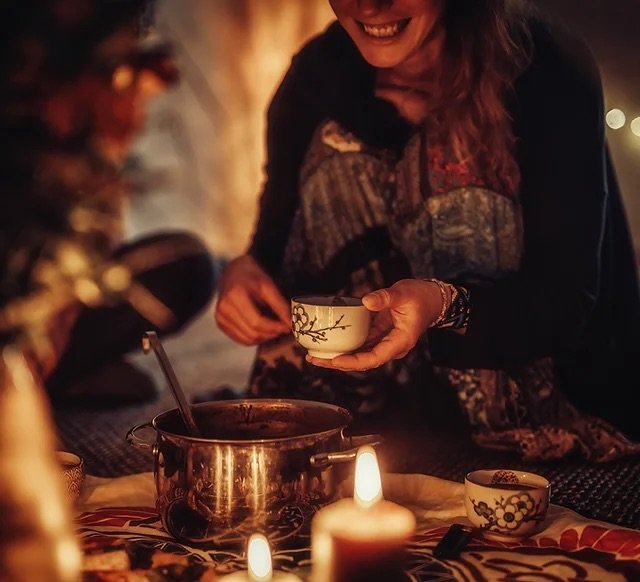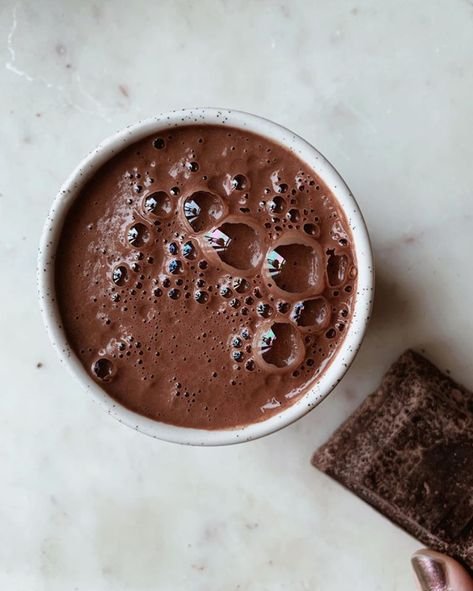A cacao ceremony is a type of shamanic healing, rooted in helping rebalance the energies within us, open our hearts, and restore good health. The cacao plant is seen as a medicinal plant and has been used for a number of spiritual, medicinal, and ceremonial purposes throughout history.
It's for those who want to heal your mind, body, and spirit.
Cacao

FAQ
-
A cacao ceremony is a type of shamanic healing, rooted in helping rebalance the energies within us, open our hearts, and restore good health. The cacao plant is seen as a medicinal plant and has been used for a number of spiritual, medicinal, and ceremonial purposes throughout history.
It's for those who want to heal your mind, body, and spirit.
-
Ceremonial cacao and chocolate may come from the same source—the cacao bean—but they differ significantly in their processing, composition, and intended use. Here are some key differences:
Processing: Ceremonial cacao is minimally processed, often involving only roasting, cracking, and grinding the cacao beans into a paste. This preserves the natural compounds and nutrients present in the cacao. Chocolate, on the other hand, undergoes additional processing steps, such as conching and tempering, and often includes added ingredients like sugar, milk, and flavorings.
Composition: Ceremonial cacao is typically made from pure cacao beans or paste, with no added ingredients. This results in a rich, bitter taste and a high concentration of beneficial compounds like magnesium, antioxidants, and neurotransmitter precursors. Chocolate, however, contains added ingredients that can dilute or mask the natural qualities of cacao, and may not provide the same potential health benefits.
Intended Use: Ceremonial cacao is primarily used for its medicinal and spiritual properties, often in the context of rituals, ceremonies, or mindfulness practices.
-
Cacao ceremonies are growing in popularity across the globe. What seemed like such a foreign experience for many of us ten years ago is now a journey loved by many who are looking to deepen their relationship and celebrate life. You can now find a Cacao ceremony in almost every major city, often with many other modalities incorporated into the flow. If this is your first time reading about Cacao ceremonies or ceremonial Cacao, you may be wondering what the ceremony is all about. Although there are many ways to share Cacao in ceremony, here we will explore what to expect from a ceremony that is facilitated by an experienced Cacao guide with integrity and respect.
Ceremonies and rituals range in their diverse expression. At the core of each is a space for genuine human connection and a dissolving of the barriers that separate us from ourselves and the world around us. This allows us to go deeper within, evolving our own connection to the self and our surroundings, and encouraging us to share more authentically with others in a celebration of what it is to be human. Ceremony is a time to express our gratitude, to offer ourselves to something bigger. It's a time to reset, to ask questions, and to listen for answers
-
As you walk into the ceremony you will be cleansed with copal, palo santo, or any other resin to come into the space with a clean and harmonized energy. For those of us who live in cities, we are often overstimulated and deprived of energy, which makes it difficult to stay present. This is one of the important pieces of why we take the time to cleanse ourselves with smoke before accessing the space, to harmonize our energy as we walk into the sacred container.
Oftentimes, there will be either drumming or music to relax the nervous system and allow you to drop into the present moment.
Once the Cacao is passed around, there is an invocation—a form of saying thank you to the energies that sustain us. My invocations are very much connected to the four elements, as I feel these are the traditional ways we have understood the energy of the world. These four elements give us life: fire, water, earth, and air. After the invocation, we sit or share our intention.
The Cacao takes about 20 minutes to activate after ingestion. I personally love sharing knowledge about Cacao (its history and physical benefits), the relationship the Maya have with it, and a small part about the Mayan Cosmovision, since they have been known to be the guardians of this sacred plant. Other facilitators may have their own way to let us connect with the essence of Cacao. Some may invite in dance, some silence, some may play more music. However the facilitator decides to guide the journey, it is important for them to show respect for the plant and the ancestors who came before.
The ceremony is always closed with a meditation. Some may incorporate silence into the meditation, some may do a sound journey to integrate the experience (as I often do). In a traditional Mayan ceremony with Cacao, you would connect with the fire while you drink your Cacao. After the meditation is done, there is a closing of the container, meaning we say thank you once again to the energies that support us. Every door we open, we must also close.
It’s important to give the plant the opportunity to communicate with us and not mix the Cacao with different intoxicant substances like alcohol. In the same way, it is also important to not mix intense music or other overstimulating modalities with Cacao. We should stay calm and open to the energies, not distracted or inebriated in any way.
Ceremonies and rituals range in their diverse expression. At the core of each is a space for genuine human connection and a dissolving of the barriers that separate us from ourselves and the world around us. This allows us to go deeper within, evolving our own connection to the self and our surroundings, and encouraging us to share more authentically with others in a celebration of what it is to be human. Ceremony is a time to express our gratitude, to offer ourselves to something bigger. It's a time to reset, to ask questions, and to listen for answers.
Cacao ceremonies are growing in popularity across the globe. What seemed like such a foreign experience for many of us ten years ago is now a journey loved by many who are looking to deepen their relationship and celebrate life. You can now find a Cacao ceremony in almost every major city, often with many other modalities incorporated into the flow. If this is your first time reading about Cacao ceremonies or ceremonial Cacao, you may be wondering what the ceremony is all about. Although there are many ways to share Cacao in ceremony, here we will explore what to expect from a ceremony that is facilitated by an experienced Cacao guide with integrity and respect.
-
A cacao ceremony is perfect for someone wanting to experience and grow through shamanic ritual without the often intense experience associated with Ayahuasca.
It's for those who want to heal your mind, body, and spirit.
Cacao gives you permission to love yourself with all of the possibilities that you can be.
It helps you to visualize your goals and reveals your passions and goals through awakening and inner healing.
The plant spirit of cacao is powerful but gentle and nurturing. It invites you to work with forgiveness and acceptance and opens your creativity – one of the reasons it is very popular with artists of all types.
-
Individuals currently taking any SSRI antidepressants, low blood pressure medication, or those undergoing chemotherapy treatment should not drink more than a meditation dose. The combination of medication and Cacao can cause adverse effects when consumed in higher doses.
Women who are pregnant should not drink more than 15-20g of pure Cacao to prevent any issues.
-
No. While Cacao is psychoactive due to the various effects it has on our brain chemistry and mood, it is not considered a psychedelic. Many people do take in high doses of pure Cacao—ceremonial doses—to attain some of the transcendent or euphoric experiences attributed to psychedelics. Your experience may vary.
-
Yes. Ceremonial-grade cacao is generally safe to consume while pregnant, but we do not recommend very high servings. Like anything, moderation is key when considering the health of your baby.
Testimonals
In-Person Events
Got questions about cacao, or how it can help your wellness? Don't hesitate to email me! I'll respond quicker than you can say "chocolate heaven."








